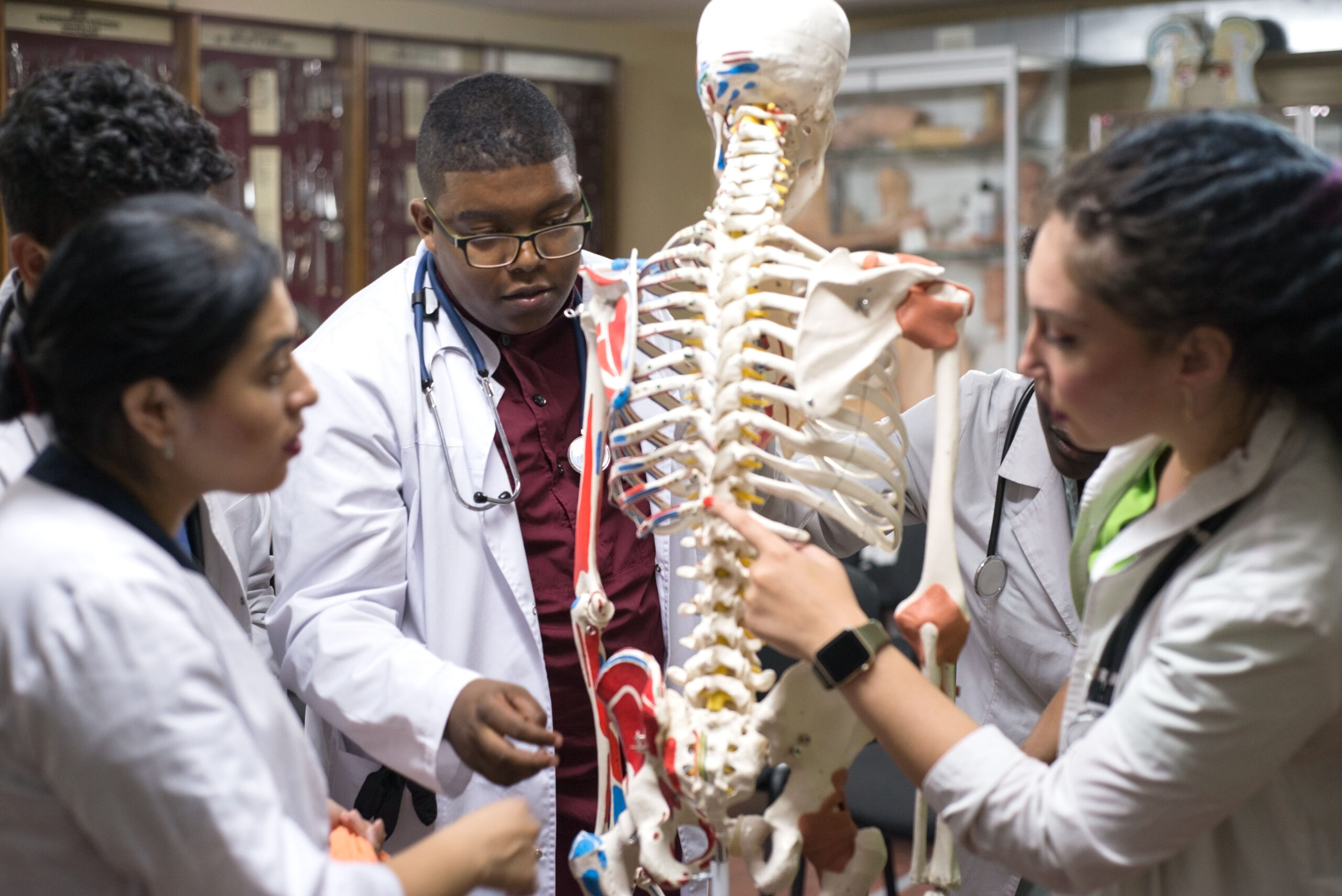Curious about the best medical schools in the United States?
You’re not alone. For good reason, becoming a medical doctor is still one of the most prestigious and competitive career paths in the world. The path is anything but simple, involving years of demanding coursework, practical clinical rotations, and specialized training. However, those who succeed reap the benefits of intellectual challenge, lifelong influence, and the capacity to improve lives.
So, if you’re going to put in all that work — which medical schools top the charts this year, and what do you need to know before you apply? In this guide, we’ll break down the 2025 medical school rankings, explain what makes a med school “the best,” and offer early-stage application tips for students starting their journey now.
Why do medical school rankings matter?
Let’s face it: medical schooling is a marathon, not a sprint.
With thousands of qualified students applying every year and only a limited number of spots available, you need to choose wisely. Considering that so much hard work is ahead of you and several years of your life are on the line, it’s no small decision. After all, your path to becoming a doctor will be shaped by where you study.
But (and it’s a big “but”), that doesn’t mean every student needs to go to Harvard to become a great doctor. In fact, choosing the right medical school is about more than a number next to its name. It’s about fit, mission, and what the program offers you.
Here’s a video summary of how to approach this decision:
What makes a medical school “good”? Where do the medical school rankings come from?
Here’s a hint: it’s not just about name recognition.
When it comes to medical school rankings, there’s a lot more under the surface than just prestige. Each year, outlets like U.S. News & World Report and The Princeton Review evaluate programs based on a complex mix of factors that reflect both academic rigor and clinical excellence.
So — what really sets a top medical school apart? Let’s break it down.
1. Research funding and output
Top-tier med schools often lead in cutting-edge biomedical research. Institutions like Harvard, Stanford, and Johns Hopkins typically receive tens of millions in NIH grants each year — giving students access to high-tech labs, clinical trials, and mentorship from field-defining researchers. If you’re considering an MD-PhD path or want to contribute to scientific breakthroughs, research rankings matter.
2. Residency match rates
The residency match rate is arguably the ultimate test of a med school’s strength. Programs that consistently send graduates into competitive specialties (like dermatology, orthopedic surgery, or anesthesiology) often signal strong academic prep and support. These schools also tend to have robust advising and clinical placement services.
3. GPA and MCAT stats
It’s no surprise that the most selective medical schools also boast the highest incoming stats. Think median MCAT scores in the 515–522 range, and GPAs well above 3.8. While these numbers don’t guarantee success, they reflect a highly competitive peer group — which can elevate your own performance and expectations.
4. Faculty-to-student ratio and class size
Small-group learning, early clinical exposure, and faculty mentorship all depend on how many students are sharing the space. Top schools often tout low student-to-faculty ratios and a tight-knit cohort model, which helps cultivate collaboration instead of cutthroat competition.
5. Institutional mission and primary care ranking
Don’t overlook mission-driven metrics. Schools like UCSF and the University of Washington consistently rank among the best for primary care education and serving rural or underserved communities. If you’re passionate about health equity, global health, or community service, these rankings may matter more than prestige alone.
Not sure if a research powerhouse or a primary care leader is right for you? Consider these three key questions:
- Are you more interested in lab research or patient care?
- Do you want to work in an urban hospital or rural clinic?
- Are you open to public service missions or focused on private practice?
Here’s the bottom line:
Rankings are useful, but they’re not everything. Pay attention to your own goals: research vs. clinical practice, big city vs. rural learning, public health vs. private practice. The “best” medical school is the one that fits your future.

2025 medical school rankings: top 20 programs
Which U.S. medical schools lead the pack in 2025?
The newest medical school rankings, released by the U.S. News & World Report, reflect the latest shifts in academic reputation, research funding, and graduate outcomes. While the top five schools are longtime leaders in medical education, several rising institutions have gained ground thanks to expanded clinical offerings, innovative curriculum design, and strategic investments in research and community health.
Below, we’ve listed the top 20 medical schools in the United States for 2025, with a brief summary of each school’s strengths and profile.
1. Harvard University (Boston, MA)
Renowned for its groundbreaking research, global health initiatives, and unparalleled academic prestige. Competitive admissions include a median GPA of 3.94 and an MCAT score of 520.
2. Johns Hopkins University (Baltimore, MD)
Highly ranked for surgical specialties, clinical training, and biomedical research. Known for NIH funding and a tradition of innovation.
3. University of Pennsylvania (Perelman) (Philadelphia, PA)
Offers dual-degree options and strong neuroscience and cardiology programs. The school combines Ivy League academics with urban hospital access.
4. Columbia University (Vagelos) (New York, NY)
A leader in cardiology and internal medicine, Columbia emphasizes urban healthcare access and interdisciplinary training.
5. Stanford University (Stanford, CA)
Tech-forward curriculum with strong ties to Silicon Valley biotech research. Excels in bioengineering and medical innovation.
6. Mayo Clinic Alix School of Medicine (Rochester, MN)
Known for small class sizes and world-class clinical training within the Mayo Clinic network. A top destination for patient-centered medicine.
7. Washington University in St. Louis (St. Louis, MO)
Offers high NIH research funding and top-tier pediatrics. Students benefit from generous financial aid and supportive faculty.
8. University of California, San Francisco (UCSF) (San Francisco, CA)
One of the best programs in the country for primary care, internal medicine, and health equity. UCSF is also a leader in public health and DEI.
9. Yale University (New Haven, CT)
Features a flexible, self-directed curriculum and a strong reputation in psychiatry and academic medicine. The Yale System emphasizes independent learning and research.
10. Weill Cornell Medical College (New York, NY)
Located in the heart of Manhattan, Weill Cornell has strong programs in global health and clinical training in major NYC hospitals.
11. Duke University School of Medicine (Durham, NC)
Known for its accelerated curriculum and strong research support. Students complete core clinical rotations in their second year.
12. University of Washington (Seattle, WA)
Nationally recognized for its excellence in rural health and primary care. The WWAMI program extends access to underserved regions.
13. University of Chicago (Pritzker School of Medicine) (Chicago, IL)
Offers a close-knit academic environment with strengths in bioethics, endocrinology, and health disparities research.
14. Vanderbilt University (Nashville, TN)
Focuses on innovation in personalized medicine and mentorship. Known for a collaborative learning environment.
15. University of Michigan Medical School (Ann Arbor, MI)
Strong outcomes in public health, residency placements, and leadership training. Offers one of the most well-rounded medical educations in the Midwest.
16. Northwestern University (Feinberg School of Medicine) (Chicago, IL)
Combines rigorous academics with interdisciplinary clinical practice and research. Located in downtown Chicago.
17. Icahn School of Medicine at Mount Sinai (New York, NY)
Emphasizes DEI, population health, and social justice. Offers flexible pathways and early assurance programs for select undergraduates.
18. Baylor College of Medicine (Houston, TX)
A highly affordable private school with strong partnerships across the Texas Medical Center. Known for primary care and clinical access.
19. University of California, Los Angeles (David Geffen School of Medicine) (Los Angeles, CA)
Offers dual-degree programs and training in public service, global health, and community medicine in Southern California.
20. Emory University School of Medicine (Atlanta, GA)
Excels in infectious disease research and hospital-based training. Partners with the CDC and Emory Healthcare system.
These institutions represent the top tier of medical education in the U.S. — but remember, there are over 150 accredited MD and DO programs nationwide. Top medical school rankings are helpful, but finding a school aligned with your goals, values, and learning style matters even more.
Up next, we’ll walk through the key steps in the medical school application process — and how you can build a competitive profile before you apply.

From high school to medical school: how to prepare and apply
If you’re serious about pursuing medicine, your timeline begins now. Whether you’re still in high school or already deep into your college pre-med coursework, understanding the full application process early will help you avoid costly mistakes — and maximize your chances at a top-tier program.
Let’s walk through the big-picture steps of getting into medical school and how you can prepare at every stage.
Here’s a simplified timeline of your path from high school to med school:
- High School: Focus on building strong STEM fundamentals, explore health-related extracurriculars (volunteering, research programs, shadowing), and choose a college with strong pre-med support.
- College Years 1–2: Take prerequisite courses (biology, chemistry, physics) and earn good grades in them, build relationships with professors, join pre-med organizations, and begin volunteering or clinical exposure.
- College Year 3: Prepare for and take the MCAT, begin writing your personal statement, and start researching schools.
- College Year 4: Submit actual application(s), write secondaries, interview, and await match decisions.
You might notice that your 3rd and 4th years of college are pretty important! Let’s zoom in on that key time period! Here’s what a sample med school application timeline for undergraduates looks like.
- January – April (spring of junior year): Finalize MCAT prep and start researching colleges
- By May: Register for online application account(s)
- By June: Submit primary application(s)
- July – August (summer): Write secondary essays
- August – October (fall of senior year): Interview season
- October – March (spring of senior year): Admissions decisions released
Tuition and financial aid
Let’s get real for a second. What does medical school cost, and how do you pay for it?
The average cost of medical school tuition and fees is around $60,000 per year. However, public or in-state schools can be more affordable, and scholarships or service programs can also help alleviate some of the financial burden.
Just like applying to undergraduate colleges, it’s smart to start early with your FAFSA, submit any school-specific financial aid forms, and apply for merit-based awards when eligible.
Application basics: what you need to know
Most U.S. students apply through the AMCAS (for MD programs) or AACOMAS (for DO programs). Here’s what you’ll submit:
Official transcripts and GPA
To be competitive, you’ll need strong academics. A GPA of 3.7 or higher, especially in science courses, is typically expected.
MCAT scores
Aim for high MCAT scores; top schools often expect a 515 or above.
Personal statement (about 5,300 characters)
Take the time to communicate a clear, personal reason for pursuing medicine, backed by real-world experience.
Work and activities section
Most competitive applicants include clinical experience in their application. This includes shadowing doctors, hospital volunteering, or hands-on work in healthcare settings.
Letters of recommendation
Naturally, you’ll also need excellent recommendations — ideally from professors, physicians, or research mentors who can speak to your strengths, if possible.
Secondary essays for each school
When possible, reference leadership and service experience through impactful extracurriculars, research, or community engagement.
Interviews for selected applicants
Keep in mind that many med school admissions are rolling, meaning early applicants often have an advantage. Aim to submit your primary application as soon as it opens in late spring or early summer.
Start early, plan strategically
Even if medical school feels years away, your choices in high school can set the foundation for success:
- Choose challenging science courses (AP Bio, Chem, or Physics)
- Explore summer research or medical internships
- Join health or STEM-related clubs
- Reflect early on why you want to pursue medicine
Want more ideas? Explore this pre-med program guide to choose a college that supports your long-term goals.
Additionally, keep in mind that although the road to medical school is lengthy, you don’t have to travel it alone. From high school through medical school applications, Empowerly’s counselors work one-on-one with students to create competitive pre-med pathways. Get in touch with Empowerly right now to create your pre-med roadmap, go over your college list, and begin making plans for a medical career with knowledgeable assistance at your side.
